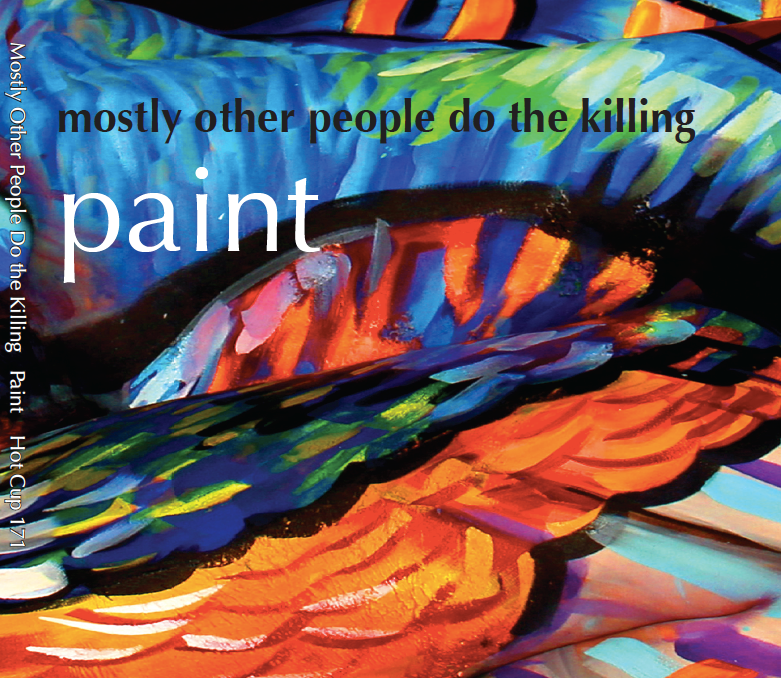Mostly Other People Do the Killing started as a piano-less quartet, expanded to a septet to explore early New Orleans styles, raised hackles as a quintet when it created a note-for-note-improvisations-and-all recreation of Miles Davis’s Kind of Blue, then settled back down to a quartet (this time featuring piano and saxophone) in 2015. Restless? Mutable? Fascinating.
In every incarnation, MOPDTK has been a subversive force, raiding the history of jazz as a way of insisting on its own personality. Though the band is led by bassist and composer Moppa Elliot, every member has been a fiendishly talented player with big ideas, and the result has been a series of recordings that have a point of view rather than just delivering good music. Buried at the heart of MOPDTK is the notion that “jazz” — the art form where instrumental improvisors play those classic songs for the cocktail drinking pleasure of folks over 40 (or… 60?) or where the same is done maybe at Lincoln Center — requires some disruptive wit. Elliot names all his songs after towns in Pennsylvania, for example. Album covers may be parodies of much-beloved jazz album art. Pianist Ron Stabinsky is as likely to quote Queen as Cole Porter.
The latest from MOPDTK is another shift in form. Paint comes from the Mostly piano trio: Stabinsky, Elliot, and original drummer Kevin Shea. The feeling remains largely the same, as the group delivers a combination of immersion in honest jazz spirit and flights of fancy. But, perhaps because of the cohesion of the trio as a single voice, there are also moments when MOPDTK seems new, less antic, and more timeless.
Core to the balance and the sense of cohesion, is Shea. Quite often he proves himself a soulful, swinging timekeeper, someone who knows the tradition backwards and forwards. But he brings every track on Paint a sense of imminent thrill with a style that is frequently tumbling and rattling toward freedom even as it pulls back to perfect stops and precise accents. For example, at the top of “Orangeville” (yes, every song title has a color in it, hence Paint), Shea is playing like a team of five year-olds who just got to the percussive playground, even as the composition is a fairly mainstream bit of blues-drenched soul jazz. Something, you sense, is going to happen here beyond the groove. And so, when Stabinsky develops the theme, he ornaments it more, matching Shea’s sound, and then the improvisation quickly becomes a wild flutter of notes in the piano’s high register even as the bass continues a simple four-note rising pattern. Shea gets crazier too, and what we get is not a standard “jazz solo” over the chord progression but a much more interesting dose of free jamming that works from a single compositional motif. Elliot’s bass solo is a contrast, melodic and warm, with Stabinsky soundling slightly McCoy Tyner-ish in his accompaniment. And then we’re home again to the theme. Tradition satisfied, sure, but a freedom center to the enterprise.
This kind of fun combined with daring is all over Paint. “Black Horse” is a joyous swinger with a few quick shifts into a skittering Latin time, Shea at the controls at all times. Elliott has a crisp bass feature where Shea and Stabinsky trade mad phrases with him before he takes the melody for a bit. The closer, “Whitehall” sounds like a classic tune carved out of the fat part of the Tin Pan Alley tradition, but it morphs with each harmonic wave, then transitions into modern territory for a solo in modal modern style. “Plum Run” is a charming waltz that passes the melody from piano to bass and back again, with Stabinsky solo that toys with you before it sweeps you away.
This may be the first MOPDTK recording where you can forget, at times, that you’re listening to jazz’s merry pranksters. It turns out that Duke Ellington wrote a tune called “Blue Goose” — which is also a town in PA — so here it is, modern but not goofed on. Shea gives you that signature stumble-groove as Stabinsky rides over Duke’s changes, but you’re always in safe hands. “Golden Hill” is simply a gorgeous ballad, brought character but not lunacy as the rat-a-tat moments and climatic build between piano and drums prove creative but not disorienting in a post-modern “jazz as commentary on itself” way.
There are still moments of in-joke fun, however. “Green Briar” is a kick, a bashing tune that lets the trio really romp. The theme is consonant and sunny, punctuated with a stop-time figure that hooks your ear. Stabinsky dives into a soulful solo that has a slightly messy, late-1950s feeling, but about two minutes in he catches a whiff of the rippling style that we associate with pianist McCoy Tyner, at which point he goes full Mostly Other People Do the Killing on us — sliding in and out of specific quotes from Tyner’s iconic piano solo on John Coltrane’s most famous recorded version of “My Favorite Things”.
With a couple of other exceptions, Paint gives us a vision of MOPDTK as a band that has a maturing vision, a new sense of focus. I don’t know if this is a “better” band , as jazz needs the critique that classic Mostly Other People Do the Killing always provided. But this new cast of the group is impressive on its own terms, with Stabinsky proving that he is a compelling primary soloist and with Shea pushing toward astonishment. I promise not to miss the pranksters if this direction continues.

